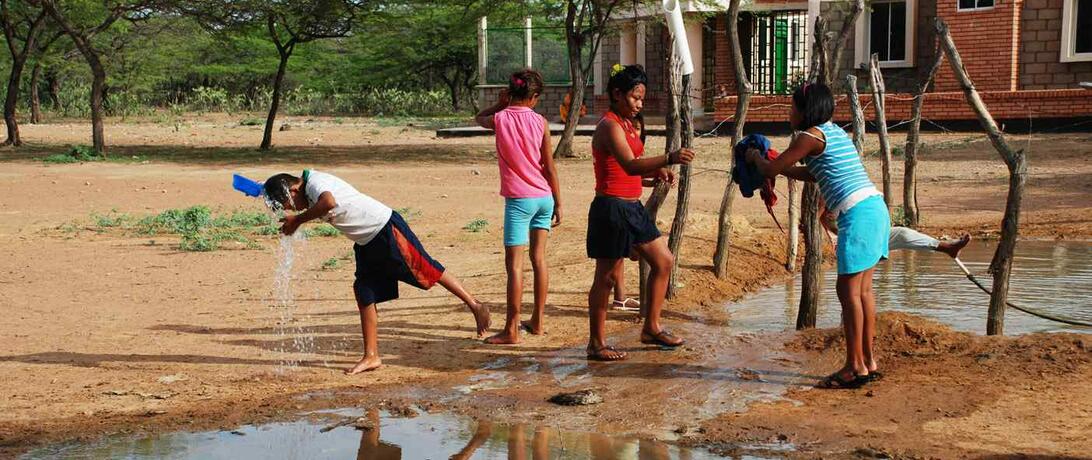
Women are more likely to experience increased violence in the wake of disasters such as floods and earthquakes. They also take on the overwhelming, when droughts force their husbands and sons to leave home to find work.
In honor of upcoming Earth Day, today’s post will focus on the connection between women and climate-related threats.
Contemporary literature on global responses to climate change often overlooks both the unique dangers women face in unstable regions, and their contributions to adapt or mitigate the impacts of climate change. Yet, emerging reports from the field reveal that, in much the same way as other threats to global stability, climate change impacts men and women differently.
For example, as noted in a 2015 report from the Georgetown Institute for Women, Peace and Security, women are more likely to experience increased violence in the wake of disasters such as floods and earthquakes. They also take on the overwhelming burden of becoming the heads of their households, when droughts force their husbands and sons to leave home to find agricultural work. However, in spite of this uncertainty, women are much more than just victims. Even though women frequently face disproportionate and distinct climate-based threats, they are also powerful agents of change.
Applying a Gender Perspective to Discussions on Climate Threats
For this reason, it is vital that the international community apply a gender perspective to its discussions on climate threats, and tap women activists for their experience and knowledge on how to adapt and mitigate the devastating effects of climate change. In collaboration with women activists on the ground, Our Secure Future, Global Greengrants Fund, and Urgent Action Fund identified key points that illuminate the relationship between women’s rights, security, and climate change—and what women bring to the table to address this non-traditional security threat.
- Studies show that when women are engaged as decision-makers in resilience and disaster-mitigation plans, they are more able to adapt to and manage the impacts of disasters for their communities.
- Women are more likely to die in climate disasters than men. But women are not merely victims of climate change - they also lead the way in mitigating the impacts of climate change by optimizing energy efficiency, using low-footprint energy sources, and influencing consumption patterns.
- Increasingly, women who speak out about environmental damage and threats to local communities generated by extractive industries (including gas, coal, and mining of precious metals), are being targeted for their activism. As a result, they face the same risks as male activists, in addition to gender-based violence and gender-specific risks, such as rape.
- Grassroots activists on gender equality, climate change, and peace and security are increasingly using legal mechanisms, such as the United Nations and the International Criminal Court, to promote corporate and government accountability and protect human rights.
- Creating opportunities to amplify women’s voices strengthens initiatives across the gender equality, climate change, and peace and security agendas.
For more on this issue, see “Women’s Crucial Role in Combating Climate Change,” which appeared in The New York Times on April 1, 2017.
Note: The above information is the product of an event titled “Women at the Crossroads: Human Rights, Security, and Climate Change,” hosted jointly by all three organizations in August of 2016.
Article Details
Published
Written by
Topic
Program
Content Type
Opinion & Insights